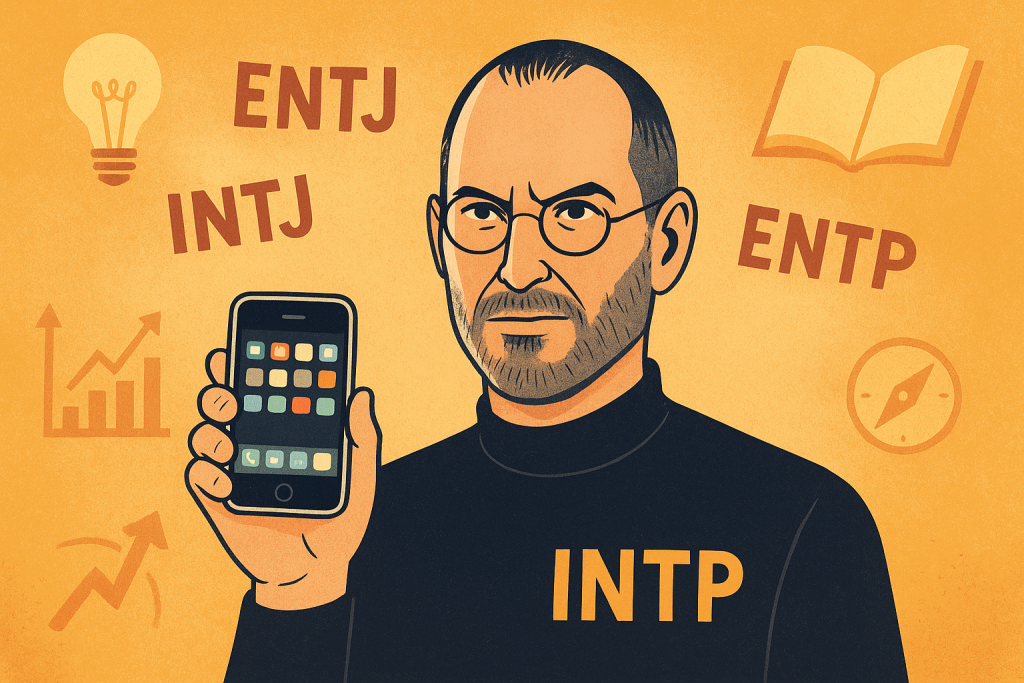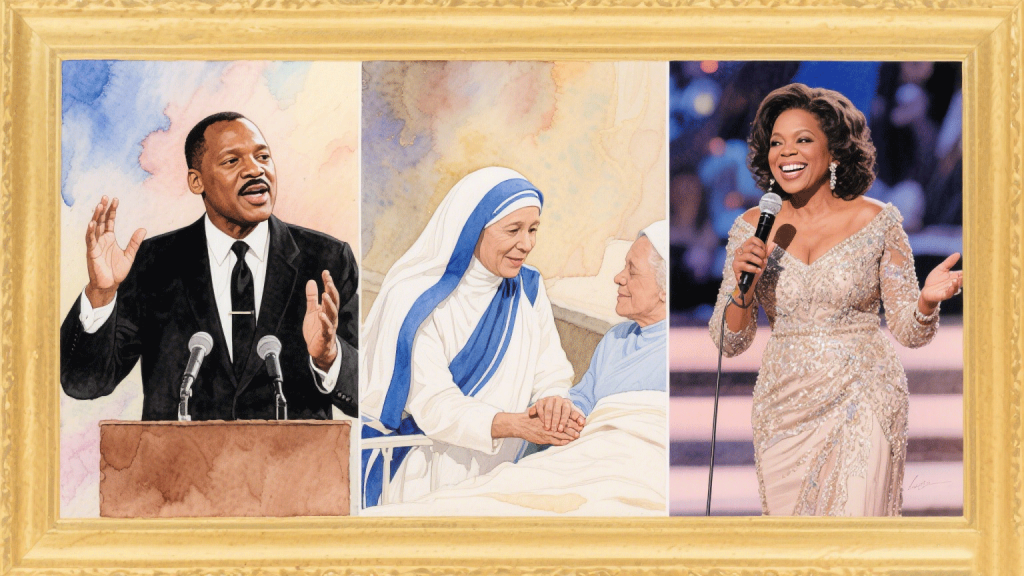This article explores the “Steve Jobs MBTI” personality type, uncovering how his mindset, vision, and leadership style defined modern innovation and changed the world.
Introduction: The Mystery of “Steve Jobs MBTI”
The question “Steve Jobs MBTI” has fascinated psychologists, entrepreneurs, and fans alike. As one of the most influential figures in technology and design, Steve Jobs’ personality has become a subject of endless curiosity. What made him so visionary, uncompromising, and creative? To understand this, we must decode Steve Jobs MBTI — a key to his psychological blueprint.
Through analyzing his behaviors, decisions, and communication style, experts often associate Steve Jobs MBTI with either ENTJ (The Commander) or INTJ (The Architect). Both types belong to the Rational (NT) group — thinkers, visionaries, and builders who push humanity forward. But which one truly defines him? Let’s dive deep into his personality to find out.
Understanding MBTI: The Framework Behind “Steve Jobs MBTI”
The Myers-Briggs Type Indicator (MBTI) divides people into 16 personality types across four dichotomies:
Extraversion (E) vs. Introversion (I) – Energy source Sensing (S) vs. Intuition (N) – Information processing Thinking (T) vs. Feeling (F) – Decision-making Judging (J) vs. Perceiving (P) – Lifestyle structure
To decode Steve Jobs MBTI, we analyze which preferences align with his well-documented personality traits.
Was Steve Jobs an ENTJ or INTJ?

The two most debated MBTI types for Steve Jobs are ENTJ and INTJ. Let’s compare these in the context of his life and achievements.
| Trait | ENTJ (Commander) | INTJ (Architect) | Steve Jobs Alignment |
|---|---|---|---|
| Energy Source | Outgoing, assertive, public leader | Private, focused, introspective | Jobs was both — introverted yet dominant in vision |
| Decision-Making | Logical, strategic | Innovative, visionary | Strong alignment with both types |
| Focus | External execution | Internal perfection | Jobs showed INTJ-style obsession with perfection |
| Leadership | Bold, directive | Quietly authoritative | Jobs commanded teams like an ENTJ |
| Creativity | Practical innovation | Abstract innovation | Deeply intuitive, fits INTJ-Ni dominance |
Many experts conclude Steve Jobs MBTI most likely to be INTJ — driven by intuition, vision, and perfectionism — but with ENTJ-like charisma that brought ideas to life.
The INTJ Explanation: Steve Jobs as “The Architect”
1. Visionary Thinking (Intuition – N)
Jobs possessed a rare ability to see the future before it existed. From the Apple II to the iPhone, his ideas consistently reshaped entire industries. INTJs rely on intuition (N) to connect abstract concepts into revolutionary innovations.
His words often reflected Ni-dominant thinking: “People don’t know what they want until you show it to them.”
2. Independent Judgment (Thinking – T)
INTJs are strategic and rational, sometimes brutally so. Jobs was known for his uncompromising standards, often clashing with employees when ideas didn’t meet his expectations. This analytical decision-making aligns perfectly with the Thinking (T) trait within Steve Jobs MBTI analysis.
3. Obsession with Perfection (Judging – J)
Jobs demanded complete control and precision, from product design to packaging. This structured mindset — desiring closure and order — is a hallmark of Judging (J) personalities.
4. Private but Purposeful (Introversion – I)
Although he could appear charismatic on stage, Jobs was deeply introspective. He retreated to meditation, minimalist lifestyles, and private reflection — all signs of Introversion in Steve Jobs MBTI.
The ENTJ Perspective: The Charismatic Commander
While INTJ fits the internal blueprint, ENTJ also captures part of Steve Jobs MBTI behavior — especially his leadership style.
Dominant Extraverted Thinking (Te): Jobs was a master of execution, driving his teams ruthlessly toward goals. Charisma & Persuasion: Like classic ENTJs, Jobs had the ability to rally others around his vision, turning skepticism into belief. Public Leadership: His keynote presentations (“Stevenotes”) showcased an ENTJ’s energy — bold, confident, and visionary. Strategic Control: ENTJs excel in leadership through structure and discipline — qualities central to Jobs’ management philosophy.
Thus, while his cognitive foundation may have been INTJ, his public execution resembled ENTJ dominance.
“Steve Jobs MBTI” and His Creative Process
1. Embracing Simplicity
Jobs once said, “Simplicity is the ultimate sophistication.”
This mindset mirrors INTJ minimalism, focusing only on what matters. In Steve Jobs MBTI, this simplicity was not just design — it was a worldview.
2. Blending Art and Technology
One of Jobs’ greatest strengths was integrating intuition (N) and thinking (T) — balancing logic and creativity. This duality defined his Steve Jobs MBTI complexity: an analytical visionary with an artist’s heart.
3. Reality Distortion Field
His ability to bend perception and make others believe in impossible goals reflects Ni-Te dynamics typical of INTJ/ENTJ types. This “reality distortion field” was central to Steve Jobs MBTI-based personality analysis.
Leadership Through the Lens of “Steve Jobs MBTI”
Jobs’ leadership was transformational — visionary yet demanding. Let’s see how Steve Jobs MBTI shaped his management style.
Visionary Leadership
Saw technology not as hardware but as human experience. Anticipated trends long before the market. Encouraged teams to think beyond limits — “Make a dent in the universe.”
Demanding Perfection
Fired employees who didn’t share his standards. Rejected dozens of prototypes before approving one. His perfectionism — a signature INTJ trait — defined Apple’s brand identity.
Emotional Intelligence
Although labeled as cold by some, Jobs showed deep empathy for users, predicting what they would love even before they realized it — an intuitive Feeling (F) balance within his logical frame.
“Steve Jobs MBTI” in Product Design
Each Apple product reflected his MBTI-driven thinking process:
| Product | MBTI Trait Reflected | Description |
|---|---|---|
| Macintosh | Intuition (N) | Vision of making computers personal |
| iPod | Judging (J) | Simplicity and control |
| iPhone | Thinking (T) | Logical design meets human intuition |
| iPad | Intuition + Vision | Expanding creativity and digital interaction |
Every product told the story of Steve Jobs MBTI — a man balancing vision and execution, art and engineering.
How “Steve Jobs MBTI” Influenced His Career Path
Risk-Taking – Jobs’ intuitive confidence led him to make bold moves like launching Pixar or returning to Apple. Long-Term Vision – INTJs thrive on strategic foresight. Jobs envisioned entire ecosystems — iTunes, App Store — before they were trends. Reinvention – Each stage of his life (Apple, NeXT, Pixar, Apple 2.0) mirrored INTJ/ENTJ adaptability. Mentorship & Control – Jobs loved teaching but hated compromise — typical of an INTJ’s perfectionism.
The Duality of Genius: Strengths and Weaknesses
Strengths of Steve Jobs MBTI:
Visionary innovation Strategic long-term planning High creative intelligence Relentless focus Ability to inspire loyalty and fear simultaneously
Weaknesses of Steve Jobs MBTI:
Impatience and intensity Perfectionism bordering on obsession Difficulty with emotional empathy at work Resistance to external opinions
Jobs’ MBTI strengths and weaknesses were two sides of the same coin — his passion that built Apple also created chaos around him.
MBTI and the Apple Culture
The Apple corporate culture was a direct manifestation of Steve Jobs MBTI principles:
Innovation as identity (Intuition + Thinking) Secrecy and control (Judging + Introversion) Simplicity as philosophy (Ni-Te perfectionism)
Employees often said working under Jobs felt like “being in a pressure cooker of genius.” His MBTI traits became Apple’s DNA: minimalism, precision, and relentless innovation.
Comparing “Steve Jobs MBTI” to Other Tech Visionaries
| Figure | MBTI Type | Comparison |
|---|---|---|
| Bill Gates | INTJ | More systematic and analytical than Jobs |
| Elon Musk | INTJ/ENTP | Shares visionary traits but more risk-driven |
| Jeff Bezos | ENTJ | Similar leadership intensity, less design focus |
| Mark Zuckerberg | INTP | More analytical and introverted |
Among them, Steve Jobs MBTI stands out for balancing intuition, design, and control — combining art with engineering in a way none could replicate.
Lessons from “Steve Jobs MBTI” for Personal Growth
Trust Your Vision: Don’t be afraid to follow intuition even when others doubt you. Demand Excellence: As Jobs said, “Be a yardstick of quality.” Simplify Relentlessly: Complexity confuses; clarity wins. Balance Logic and Emotion: True innovation needs both intellect and empathy. Lead with Purpose: Inspire through mission, not authority.
Understanding Steve Jobs MBTI can help individuals harness similar traits — focus, innovation, and vision — in their own fields.
Criticisms and Misinterpretations of “Steve Jobs MBTI”
Some argue that labeling Jobs under a single MBTI type oversimplifies a complex genius. Indeed:
He displayed both INTJ precision and ENTJ dominance. Emotional intensity suggests occasional INFP-like sensitivity. His Zen philosophy added spiritual depth beyond MBTI categories.
Yet, despite nuances, the Steve Jobs MBTI framework remains a powerful lens to understand how personality fuels world-changing innovation.
Conclusion: The Legacy of “Steve Jobs MBTI”
In the end, Steve Jobs MBTI reveals more than just letters — it uncovers a blueprint of genius. Whether INTJ or ENTJ, Jobs’ mind was wired for vision, perfection, and purpose. His MBTI type not only shaped his life but redefined how humanity interacts with technology.
As Jobs himself said:
““The people who are crazy enough to think they can change the world are the ones who do.”
”
And that’s the ultimate embodiment of Steve Jobs MBTI — visionary, relentless, transformative.
Most experts classify Steve Jobs MBTI as INTJ, though some argue he displayed ENTJ tendencies.
It explains his leadership, creativity, and decision-making style — insights useful for entrepreneurs and leaders.
His perfectionism, intuition, and vision became Apple’s foundation for innovation.
While innate tendencies differ, qualities like strategic thinking, discipline, and creativity can be learned and refined.

